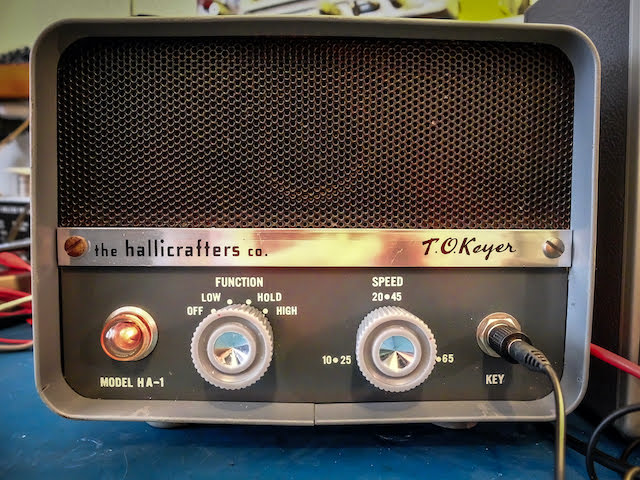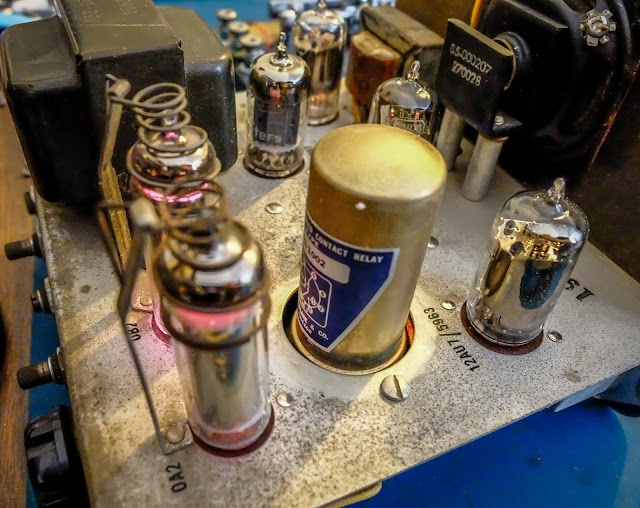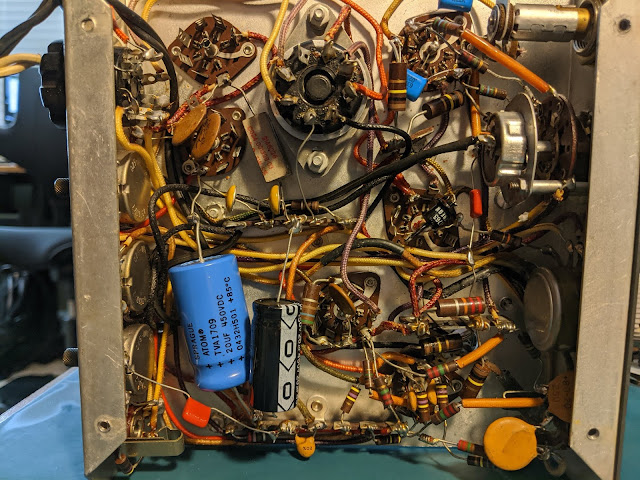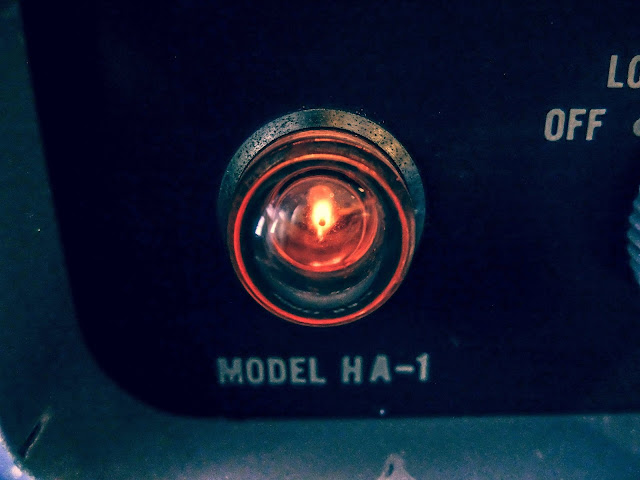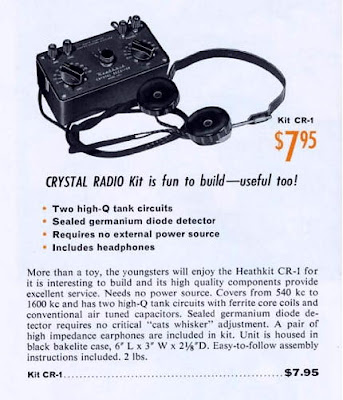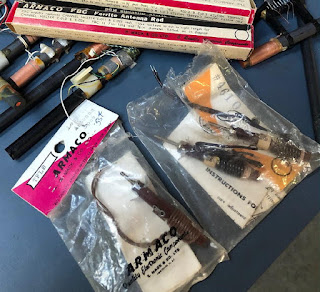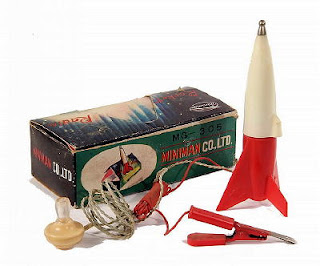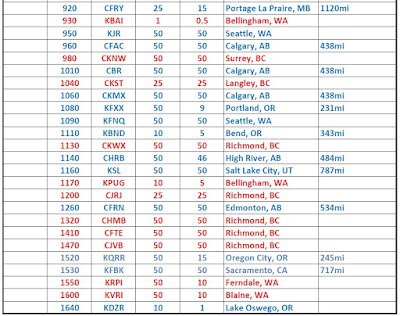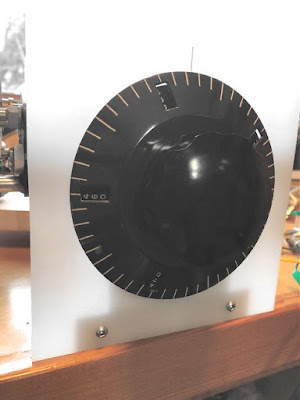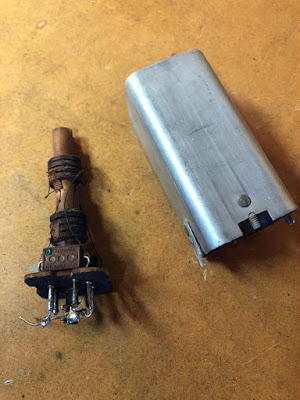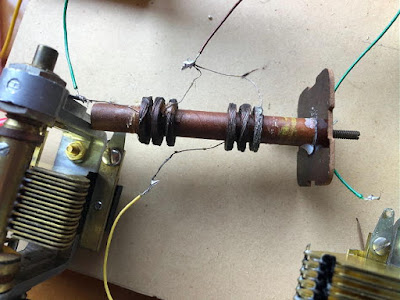 ICQ Podcast Episode 318 – South Essex Rally Review
ICQ Podcast Episode 318 – South Essex Rally Review
In this episode, Martin M1MRB is joined by Chris Howard M0TCH, Martin Rothwell - M0SGL, Frank Howell - K4FMH and Bill Barnes - N3JIX to discuss the latest Amateur / Ham Radio news. Colin M6BOY rounds up the news in brief and this episode’s feature is - South Essex Rally Review.
ICQ AMATEUR/HAM RADIO PODCAST DONORS
We would like to thank our monthly and annual subscription donors for keeping the podcast advert free. To donate, please visit - http://www.icqpodcast.com/donate
- ARRL Expands its Roster of Online Discussion Groups for Members - Undersea Expedition Planned to Retrieve Titanic’s Radio Gear - Bletchley Park- Build a Radio Receiver - Mysterious Radio Signal from Space is Repeating Every 16 days - French look at 3-Tier CEPT ham radio structure - RSGB Train the Trainer - New Amateur Extra Question Pool Released - Turn the bands Green for St Patricks Day
Colin Butler, M6BOY, is the host of the ICQ Podcast, a weekly radio show about Amateur Radio. Contact him at [email protected].
 Hallicrafters HA-1 Electronic Keyer
Hallicrafters HA-1 Electronic Keyer
High Voltage Electronic Keyer from 1960
What an electronic keyer was like 60 years ago
A keyer without DIT / DAH memory
That really calls for a change in my paddle usage. My brain needs to keep in mind the length of DAHs so that I don't rush and release a following DIT before the current element completes. This is a bigger problem below 25wpm given the longer length of the DAHs.
The Hallicrafters HA-1 manual states that the keyer is different from other electronic keyers and requires "a knack" to use effectively. I think I've discovered whereof it speaks.
Conclusion
Richard Carpenter, AA4OO, is a regular contributor to AmateurRadio.com and writes from North Carolina, USA. Contact him at [email protected].
 AmateurLogic 140: New Stuff & Old Stuff
AmateurLogic 140: New Stuff & Old Stuff
AmateurLogic.TV Episode 140 is now available for download.
George, Tommy and Wayne make nice finds at the Capital City Hamfest. Krewe of Eve Mardi Gras Ball and a tasty treat. Icom IC-705 Quick Preview. New portable QRP antennas. Plus lots more.
1:20:57
Download
YouTube
George Thomas, W5JDX, is co-host of AmateurLogic.TV, an original amateur radio video program hosted by George Thomas (W5JDX), Tommy Martin (N5ZNO), Peter Berrett (VK3PB), and Emile Diodene (KE5QKR). Contact him at [email protected].
 The G3LEK key that turned up in Chile?
The G3LEK key that turned up in Chile?
Of course being a ships ex Radio Operator, Len was also a very proficient CW operator, and this never left him throughout his Amateur radio years.
A few days ago Martin contacted me. who now is now 2E0LEK and following in his late Dad's footsteps with the hobby.
WOW !! I am amazed .... A British engineer has contacted me through the RSGB regarding my late Fathers CW Morse Key, and it is in Santiago Chile. I have been wondering where it had gone, and now I know.
Martin said the chap who has got the old key is Simon, and he said it can be a bit iffy .... His XYL is Angie who bought it from an antiques dealer in Santiago. The dealer found it in a secondhand market in the city, called Persa Bio-Bio……Apparantly a fascinating place to visit if you ever get the chance (but don’t carry any valuables and be very careful).
Ref:https://www.fleamapket.com/listing/persa-bio-bio/
So Martin is now on the chase to find out how the key arrived in Chile? I know when Len left the old bungalow where he once lived, he cleared the garage out and filled up his VW camper van and took most of the ex MOD equipment to a place called Thackers at Cheslyn Hay (long time gone), Thackers were scrap dealers and breakers in ex ministry gear.
Leave comment below if you have come across the G3LEK CW key on it's travels. Martin would like to hear from anyone, who might know something.
.
Steve, G1KQH, is a regular contributor to AmateurRadio.com and writes from England. Contact him at [email protected].
 Public Libraries: New Served Agencies?
Public Libraries: New Served Agencies?
A long-used term by the American Radio Relay League, the National Association for Amateur Radio, is “served agency.” Almost without exception, it refers to a government agency or non-governmental organization that provides vital response support in times of disaster or, at least, in times of public service. In fact, the ARRL has official memos of understanding with many key agencies to which they promise their members or affiliates will “serve” as this screenshot from the League’s website details.
There is also an “educational outreach” page on the ARRL website. It lists programs, brochures, videos, suggestions on how to speak to youth groups, and small grants for educational outreach. But nowhere does it get the urgency, importance, or strategic planning that the “served agency” page does.
Recently, the ARRL Board approved a Life Long Learning Program, focusing on “offer[ing] a variety of learning opportunities for new, current and prospective amateur radio operators.” It mentions “youth and school resources” with ready-made presentation slides, videos, and associated materials, including a budding array of online courses. But only through school resources are libraries mentioned. Yet, the Gallup survey organization identified one leisure activity as “the most common cultural activity Americans engage in, by far.” That activity is visiting a public library.
The average 10.5 trips to the library U.S. adults report taking in 2019 exceeds their participation in eight other common leisure activities.…it’s the most common cultural activity Americans engage in, by far.”
Gallup Survey Organization
Schools and their teachers are already the foci of the League’s attention for outreach. And, from teachers whom I know who have been among the dozen or so each summer who attended the Teacher Institute, it’s a good thing. It uses the well-oiled “train-the-trainer” model of subject matter material propagation. I don’t know if there has ever been an evaluation of the program, following up and documenting how many new hams got licensed or even how many students got exposed to amateur radio after the teacher-trainer returned home. If so, I’ve just missed it. But until that happens, we just do not have common measurable outcomes on how effective the Teacher Institute is for getting students into the amateur radio hobby.
Gallup survey data recently revealed that U.S. adults attend the library on average about 10 months out of the year. This is more than they attend movies. And far more than parks or casinos. Women visit libraries twice as much as men. Hmm. That’s a population segment that amateur radio largely misses out on. And, young adults aged 18-29 attend public libraries more than any other age group. Isn’t the League trying to gain penetration into the youth market segment? The 30-49 age group is just behind the younger age group in library visits but this tapers off after age 50 onward until the typical retirement group of 65 years and beyond.
Women visit libraries twice as much as men. Hmm. That’s a population segment that amateur radio misses out on. And, young adults aged 18-29 attend libraries more than any other age group. Isn’t the League trying to gain penetration into the female and youth market segments?
Frank K4FMH
They are there, at the public library, but will we hams come? I’m reminded of the famous quote by the notorius bank robber, Willie Sutton. “I rob banks because that’s where the money is,” Willie Sutton supposedly said to news reporter Robert M. Yoder. Women and young people are at the library more than any other single public place.
Should the priority of educational outreach as one of the National Association for Amateur Radio’s goals include key educational outreach organizations as “served agencies”?
Here is a small look at the potential to reach young people in public libraries, taken from the latest Public Library Survey data available (2017) and only for the four states in the Delta Division (AR, LA, MS, TN). Over a year’s time, the 365 public library systems (actual outlets like branch libraries and bookmobiles total far greater but aggregate to the system) report these levels of traffic inside their brick-and-mortar locations, shown in the table below. The 9 million registered borrowers contribute to over 55 million visits during the year which also include unregistered borrowers. Over 5 million attend formal programs at these libraries, comprising over 3.3 million at children’s programs and a half million at young adult programs. This totals about 4 million persons in the youth market in just these four states alone. In addition, a total of 10.7 million wireless Internet sessions were utilized by patrons. This potential market traffic comes into the doors of brick-and-mortar public libraries. They reflect a clear and present target audience for the ARRL’s stated educational outreach audience. And, far easier to reach than via the school setting.

A new program that I described in a recent blog post describes one attempt by the Delta Division to leverage a current ARRL deep-discount sales program to begin raising public libraries to “served agency” status. This is the Plant the Seed! Initiative. It will be followed by the Sow the Future program, described below. The League has only recently begun using demographic data analytics to identify, understand, and reach out to desired market segments. While it’s just being rolled out to the Delta Division of four Sections in Arkansas, Louisiana, Mississippi and Tennessee, it is scalable to the all Divisions. Here’s how it works.

The ARRL has a set of 10 key books, including the two popular ones (Handbook & Antenna Handbook), for sale at a flat fee of $200 which includes shipping. They are only for library donations. Hence, the product is called the ARRL Library Book Set. For many clubs, the per-member cost of this set is less than $5.00. It’s less than a slice of pizza at a ham club lunch. The issue is that hams vary widely in their familiarity with their local library, although some might even be the Library Director! So what is the “social ecology” of where amateur radio clubs are located versus local libraries?

I extracted the ARRL affiliated clubs in the Delta Division from the ARRL Find a Club webpage. There were geocoded to varying levels of accuracy (some at the city level). The Public Library Survey that is produced annually was used as the database for library systems (branches and bookmobiles are note used here but could be). The 2016 data are the most recent available. A script to conduct a spatial search for the nearest club to each library, within each Section so all clubs and libraries are within the section boundaries, was created and executed using GIS software. The results placed over a basemap is shown above.
A couple of things emerge from this spatial representation. Some clubs are the closest one to many public libraries. In one case (Bossier City, LA), there is no library for which that club is the nearest. This is due to a nearby one in Shreveport that just happens to nose it out, so to speak, in terms of the geocoded club locations and the libraries. So, the clubs and communicate between themselves, perhaps in concert with the Section Manager, to use this map and a master list of public libraries and clubs in the Section, to determine which libraries should receive the book set donations from each club. Similarly, in another city (Starkville MS), one club is nearest to a public library several counties to the west while the other is closest to several nearby. Again, club officer communication along with the Section Manager, uses these results as they were meant to be: just a guide to the local area terrain for libraries and amateur radio clubs.
Delta Division Director David Norris K5UZ has communicated to each Section Manager with a “challenge” to see which Section can serve the most libraries. Right now, Mississippi and Malcolm W5XX is in the lead, mainly because my club, the Central Mississippi ARA, has taken delivery of two ARRL Book Sets for donation to libraries in Rankin County (Central MS Library System) and Madison County. We’ve communicated with the President of the Jackson ARC who will take the lead on the Hinds County (Jackson) Public Library System. Checking the online catalog of ARRL book holdings is an important act. The Central MS Library System had several titles but all were more than a decade old. Madison County, which has the highest median income in the State, had almost none. Surprising but that’s why we should always check a library’s online catalog of current holdings beforehand.
Getting the library’s Director involved in the donation is also vital. Don’t just “drop off” the donation at the check-out desk. Easy for the club official but terrible for the library staff. Library’s just don’t work that way regarding collection development. This “drop off” may well just get the blister wrapped donation of 10 books placed in the next sidewalk sale of the library. Take the time to get the Library Director involved. Get that person in the public relations photo and narrative as welcoming the donation so their acceptance is in the public view. Execute due diligence in this strategic investment for amateur radio. More work but far greater pay-off.
David K5UZ and I also provided an online Dropbox folder system for the “paperwork” to facilitate the implementation of this Plant the Seed! Initiative. Sub-folders include the logo, the map of the spatial ecology of clubs and public libraries (see above), a narrative document which both announces the Initiative, gives a description of the Dropbox file system and the link to it, and recommendations for Section Managers to implement the program within the Section. Finally, and this is a key to facilitating the Section Manager’s job of both encouraging and managing the roll-out of the Initiative in his Section, we created four spreadsheets. Two are the master list of ARRL affiliated clubs and public libraries in each Section. A third is a list of clubs with nearest public libraries. This gives the Section Manager an overview of the Section and helps in advising clubs on libraries to serve (see discussion above). Finally, separate spreadsheets for each club in the Section were created. This allows the SM to just email a single spreadsheet to a given club using the email contact within that individual.
These procedures reduce but do not eliminate confusion over the suggestions made to clubs. Imagine, however, just advocating that clubs donate to their libraries. Here’s the link to purchase at ARRL.org. Go to it, clubs. Check off that box. Done! Wow. That would be worse than stepping on an unseen covey of quail! More importantly, it would be destined for failure in terms of making a systemic impact on getting amateur radio material into public libraries.
It would also not create an ongoing relationship between the club and the library itself. The follow-up effort is called the Sow the Future portion of this Initiative. Offering programs on amateur radio at the local library leverages the initial book donation and benefits the library staff who are charged with creating programs for the public. This activity by ARRL affiliated clubs “serves” the public library in a very beneficial way. But it doesn’t happen without systematic planning. Planning the spatial ecology of linking national organizations like the ARRL and one or more of their Divisions to their Sections and their Sections to affiliated clubs is critical. It’s the return on the investment of the $200 set of books to get a continuing “served agency” relationship of giving programs on the amateur radio hobby at that recipient library.
Remember, Section Managers report to the Field Services Coordinator in most day-to-day matters. Getting the organizational links among the League, Division Directors (who comprise the governing Board for the League itself), Section Mangers, loosely affiliated Clubs, and individual ham operators is far from being a well-oiled or even well thought out machine. Hams who are not League members may be members of an ARRL-affiliated club. Or no club at all. So the final link in this chain is only a part of the ham radio operator market. But it’s the market that the League deals with most of the time. The need to use demographic data analytics like this becomes crucial in a loosely-coupled organizational ecology that is the case with amateur radio in the United States. The approach outlined here is just one example of using them to plan a new set of links in this ecology.
We hope that this Initiative will be met positively by clubs and their members. It’s a nominal financial commitment by clubs on a per-member basis. Doing the final leg-work on establishing an ongoing relationship with one or more local libraries is as important as the $200 donation of books. David Norris K5UZ is investigating whether it’s feasible to get the digital version of the new On the Air magazine available to recipient public libraries to leverage the wireless Internet access by registered borrowers. We will see how that materializes.
Public libraries are the dominant local community organization through which to consistently reach both women and youth, from the recent Gallup report’s findings. Libraries should be viewed as “served agencies” for educational outreach much as the League advocates ARES teams serving critical organizations in times of emergency. Or a bike race, which is more often the case. Because libraries are where the “money” is.
Frank Howell, K4FMH, is a regular contributor to AmateurRadio.com and writes from Mississippi, USA. Contact him at [email protected].
 LHS Episode #325: Ham Radio Relevance Deep Dive
LHS Episode #325: Ham Radio Relevance Deep Dive
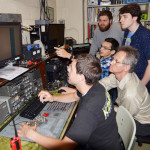
Welcome to the 325th installment of Linux in the Ham Shack. Based on a recent video and Hack-a-Day chat from Josh Nash, KI6NAZ, the hosts dive into the topic of what makes amateur radio viable in today's world of almost limitless hobbies, technology and diversions. Discussion revolves around involving everyone in the hobby, young or old, new technologies, parallel interests, stewardship, legal issues and much more. Thank you for tuning in. Hope you have a wonderful week.
73 de The LHS Crew
Russ Woodman, K5TUX, co-hosts the Linux in the Ham Shack podcast which is available for download in both MP3 and OGG audio format. Contact him at [email protected].
 Loopstick Magic And The CR-1 Clone
Loopstick Magic And The CR-1 Clone
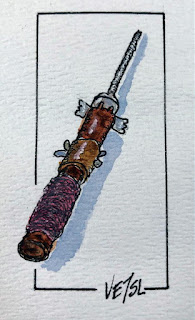 |
| BCB Ferrite Loopstick |
Regular blog readers may recall my two previous blogs, on the Heathkit CR-1 crystal radio receiver.
This very much sought-after radio is a well engineered ‘double-tuned’ set utilizing a series-tuned antenna tank circuit coupled to a parallel-tuned detector tank.
Both coils are wound on the same 1/4” diameter tubular form containing two ferrite slugs ... one for the antenna coil and one for the detector coil. The coils have been pre-wound and fixed on the form, about 20mm apart while the slugs have been waxed in place to set each inductance to the desired value.
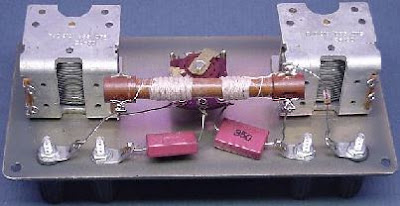 |
| courtesy: Scott's Crystal Radios |
I do wish that I'd had enough sense when I was a kid to buy myself a CR-1 as it seemed like they were dirt-cheap.
The $7.95 even included a set of headphones! Of course, $7.95 to a 12 year old was probably a lot of money, being about $70 in today’s currency!
My previous experience with homebrew DX crystal radios (ones that can hear stations other than strong locals) had taught me that they required large coils and ‘hot’ diodes. The CR-1 has neither of these yet it performed exceptionally well during the few weeks of evening tests a few months ago. I was able to log 50 stations, as described in the earlier blog ... and began to see that, just maybe, requirements may not be as rigid as I had always thought, when it comes to building DX sets!
When I discovered several ‘new-in-the bag’ broadcast band ferrite loopsticks in my junk box, I realized there might be an opportunity to allow me to make something very similar to the CR-1 circuit.
These are the same loopsticks used in the crystal ‘Rocket Radio’ of the 50s or in various transistor radios of the day.
I breadboard-mounted the two loopsticks so that the distance between the antenna coil and the detector coil could be adjusted, allowing some control over coupling and selectivity ... something not available with the stationary CR-1 coils.
Using the same antenna, headphones and external wavetraps, proved once again the excellent performance available from a very small and simple hi-Q coil system ... a DX machine without huge coils and expensive Litz! A total of 51 stations were logged over a two-week period, one more than was heard with the CR-1 and with a few ‘almost’ heards still waiting for one of those really good propagation nights. Having the ability to adjust the coupling was very helpful and made some of the weaker stations a little easier to detect. Stations in RED are local strong signals while those in BLUE are skywave propagated DX signals:
Mounting one of my old HRO 'PN' vernier dials on the main tuning capacitor provided plenty of bandspread, with each dial division corresponding to ~ 2kHz. It was very easy to locate any given frequency within the broadcast band once the dial was calibrated.
Soon after, I ran across a post by Zoltan Pap on Facebook’s ‘Crystal Set Radio Group’, describing his unique use of an old 455kHz I.F. transformer in a crystal tuner. I thought this was a rather brilliant idea and dug out an old I.F. can from the junkbox to see what it might offer.
The old I.F. can had two litz-wound (10 strand) tank coils, fixed in place over two adjustable ferrite slug cores ... in reality, something very similar to the, now very difficult to find, ferrite loopsticks used above.
The two inductors measured out at ~ 700uH - 1.1mH as the slugs were tuned from one end to the other. I was aiming for something close to the inductance used in the two CR-1 tank coils ... approximately 380uH.
A sufficient number of turns were removed from both coils to yield the needed inductance and both coils on the CR-1 breadboard clone were replaced with the old I.F. can coils.
In just a few minutes of tuning through the band, it was very easy to hear and separate all 16 local stations (RED in the above log). A few hours after sunset (on a not-so-good night) yielded quick copy of KPOJ (620kHz) in Portland, Oregon (231 miles) as well as CHED (630kHz) in Edmonton, Alberta (534 miles), demonstrating that even this old 1940's I.F. can could be turned into a crystal radio DX machine!
I don't believe the 'Q' of this pair of coils is very high, compared with the smaller loopstick, as its selectivity appears to drop off above 1000kHz. I'll try separating the form into two halves so that the coupling can be adjusted. The experiment is still under way but if you want to play and can't lay your hands on the pricey loopsticks, old I.F. cans are often much easier to find and probably a lot cheaper.
Steve McDonald, VE7SL, is a regular contributor to AmateurRadio.com and writes from British Columbia, Canada. Contact him at [email protected].

